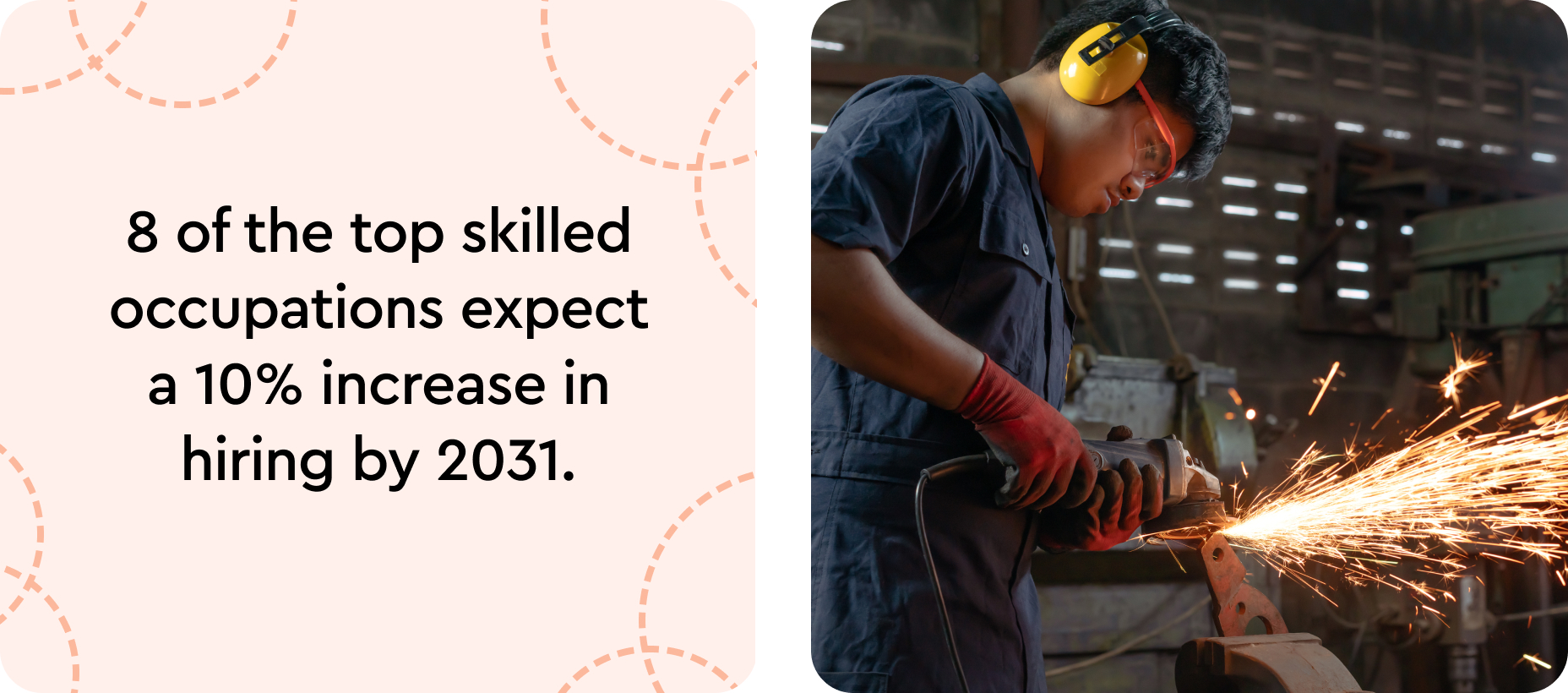As industries face growing labor shortages and increasing skills gaps, vocational education plays a critical role in preparing students for the workforce. Today’s vocational graduates must be equipped with the hands-on, job-ready skills that allow them to seamlessly transition from the classroom to the job site. However, the challenge remains: how can educators ensure that students have the skills necessary to succeed in real-world roles?
Impacted Industries, Labor Shortages, and the Growing Skills Gap
Industries like healthcare, manufacturing, and technology are struggling to find and retain qualified professionals. Many workers are retiring, leaving employers scrambling to fill positions with new, skilled talent. Yet, many of these new graduates enter the workforce without the practical, job-ready skills needed to hit the ground running.

This skills gap highlights a major disconnect between what’s being taught in schools and what’s expected on the job. It’s not just about having theoretical knowledge—it’s about knowing how to apply that knowledge in real-world scenarios. For many students, the transition from the classroom to the workplace is a tough one, especially if they aren’t receiving the practical training they need.
In fact, many new employees experience pushback from seasoned workers who may not provide the guidance and support necessary for success. This lack of mentorship and preparation can lead to frustration, job dissatisfaction, and ultimately higher turnover rates. The solution lies in ensuring that vocational students develop critical job-ready skills long before they graduate.
The Importance of Skill Practice and Assessment
Vocational education is built around a cycle of skill practice, assessment, and feedback. Each part of this process plays a critical role in ensuring students are truly job-ready. When students practice their skills in hands-on settings, they begin to gain confidence and competence in real-world applications. However, practice alone isn’t enough—regular assessments are necessary to gauge whether students have mastered the skills they need.
Assessments allow instructors to evaluate not only how well students understand concepts but how effectively they can apply those concepts in job-like scenarios. By using authentic, skills-based assessments, educators can set clear benchmarks that reflect industry standards, track student progress over time, and identify areas where additional support or practice is needed. This approach ensures that students are building practical, job-ready competencies that translate directly to the workforce.
The cycle of practice, assessment, and feedback ensures that students are continually refining their abilities. With each round, they move closer to the level of proficiency required by the industry. This process is essential for helping students identify their strengths and weaknesses, giving them a clear roadmap for improvement as they prepare to enter the workforce.
Preparing Today’s Students With In-Demand Skills
Vocational education is all about preparing students for the workforce, and that preparation begins with identifying the specific skills they need to be successful in their chosen industries. This means focusing on practical, hands-on training that goes beyond textbook knowledge.

Some of the most in-demand skills across industries today include:
- Technical proficiency: Whether in healthcare, manufacturing, or IT, students need to master the tools, software, and equipment they’ll use on the job.
- Problem-solving abilities: Employers want workers who can think critically and solve issues as they arise, not just follow step-by-step instructions.
- Communication skills: Being able to clearly communicate with colleagues, supervisors, and customers is crucial in every field.
- Adaptability: As industries evolve and new technologies emerge, students must be prepared to continuously learn and adapt their skills.
- Transferable skills: These are the soft skills—such as teamwork, time management, and interpersonal skills—that are valuable in any job, regardless of the industry.
By focusing on developing these in-demand skills, vocational programs can better prepare students for the workforce, ensuring that they’re not only qualified but confident in their abilities to excel in their chosen careers.
The Role of Feedback in Building Job-Ready Skills
One of the most effective ways to ensure that students are truly prepared for the workforce is by providing meaningful, actionable feedback throughout their training. In vocational programs, feedback plays a vital role in helping students understand where they stand in terms of skill development and where they need to improve.
For students, receiving real-time feedback on their performance is essential. Whether they’re practicing a technical skill, solving a problem, or working through a hands-on task, feedback allows them to course-correct and improve in real time. This not only builds competence but also confidence—students who know their strengths and areas for improvement are more likely to enter the workforce ready to tackle new challenges.

The Impact of Meaningful Feedback
Across all vocational studies, feedback helps students not only improve their technical skills but also gain confidence in their abilities. When students receive specific, actionable feedback, they can better understand where they need to improve and take steps to enhance their performance. This feedback also plays a critical role in preparing students for work by helping them meet industry standards and expectations.
Effective feedback isn’t just about pointing out mistakes; it’s about guiding students toward mastery. By addressing both strengths and areas for growth, feedback empowers students to take ownership of their learning journey and develop the skills they need to succeed in their future careers.
Preparing students for the workforce requires more than just teaching technical skills—it’s about ensuring they can practice, assess, and receive feedback in real-world environments. Tools like GoReact streamline this process, making it easier for educators to assess student performance and provide meaningful feedback that builds job-ready confidence and competence.











